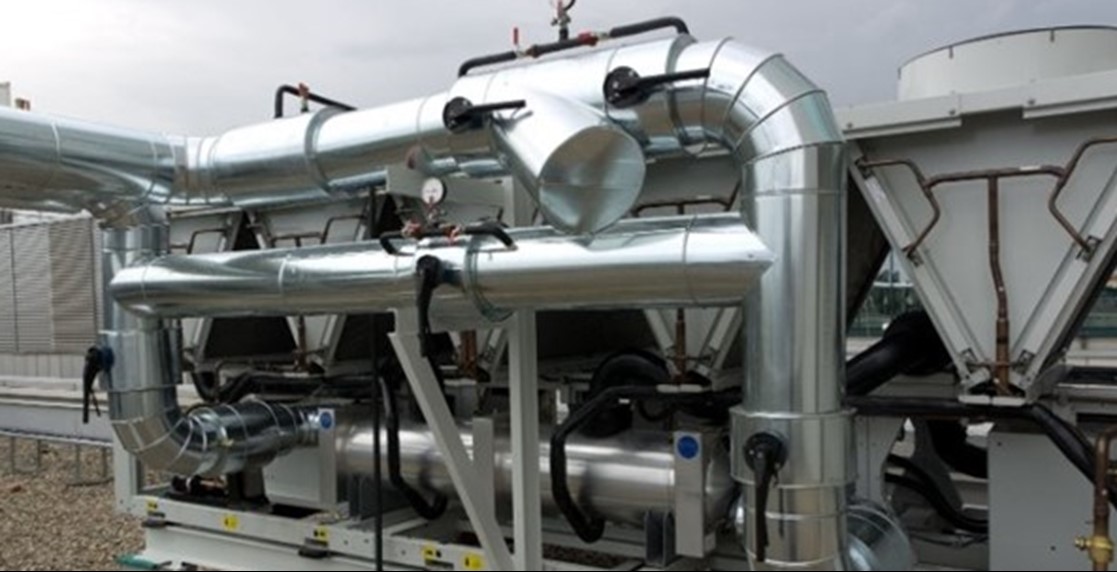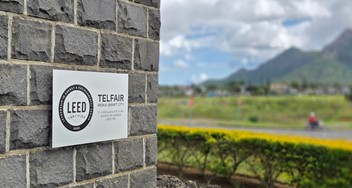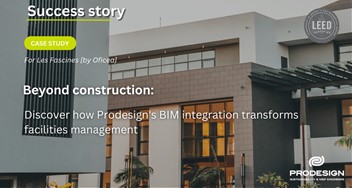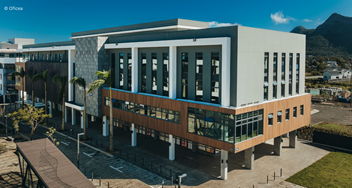Choosing the appropriate cooling equipment for any building can be a considerably more complex operation than it may at first appear. The natural tendency is to consider just the initial costs but there are many other factors that need to be taken into account, including running and maintenance costs. What is important is life-cycle cost – the cost of any cooling system over its entire life. This will include the cost of electricity consumed by the equipment, reliability, longevity and decommissioning/disposal. Any savings from buying inexpensive but poor quality machinery can quickly be eaten up by the costs of repairs and maintenance.
Life-cycle cost analysis (LCCA)…
…A minefield of conflicting information
The purpose of an LCCA is to estimate the overall costs of the various options available and to select the design that ensures that a proposed cooling system will provide the lowest overall cost of ownership. The accuracy of an LCCA will depend on many factors, but the most important remains the estimation of a systems’ energy consumption over the years. However, this is very complex to model and therefore carries the largest uncertainty. It can easily distort the analysis and lead to wrong conclusions. The energy consumption of cooling equipment or systems, for example a chiller installation, is hard to assess because chilled water plants are intricate and dynamic systems which are difficult to model with a reasonable degree of accuracy.
Chilled-water air-conditioning systems for large buildings and beach resorts
For a number of years, a chilled-water air-conditioning system has been the preferred cooling system installed in many hotels in particular in beach resorts. The underlying reason is the ability of this type of equipment to deliver the huge amount of cooling required in hotels and over large areas, which cannot be efficiently delivered by other systems like split units or variant refrigerant volume systems (VRVs).
Despite major improvement in the control and efficiency of alternatives to chillers, the latter remain more economical to operate and maintain. On the other hand, the development and improvement of various type of chilled-water cooling equipment has confused design engineers and clients alike about actual performance. For example, the latest frictionless compressor-type chillers claim to have significantly enhanced benefits and appear to consume less energy than screw or reciprocating chillers… and the story goes on.
Manufacturers’ data needs professional analysis…and that is far from simple
The actual efficiency of machines, which is an indicator of their appetite for energy, is provided by their manufacturers and should be used to guide the designer or client in their choice. However, confusion arises as there are a number of indicators of a chiller’s efficiency and over-reliance on – and sometimes misuse – of the data provided by manufacturers often leads to poor decision-making. Many suppliers and contractors have little knowledge of the actual dynamics of a building’s cooling load demand and lack proper understanding of chiller efficiency parameters. The result is that several clients and designers have been misled in their choice of equipment and the savings claimed fail to materialise.
This is where things get rather technical
Laymen can easily understand efficiency as the ratio of output to input, that is the work being done for the energy consumed, but there is more to chiller performance data, or in basic terms chiller efficiency, than that. It is indicated in various ways:
- The Coefficient of Performance (COP) is the most commonly used term to express chiller efficiency. It is the ratio of the net refrigerating/heating capacity in watts to the power input in watts at any given set of rating conditions, expressed in watts/watts.
- The Energy Efficiency Ratio (EER) is the ratio of net refrigerating capacity in British thermal units per hour (BTU/h) to the power input value in watts in any given set of rating conditions, expressed in BTU/(hW)
Many often swear by the COP figure in deciding the type of chiller to be installed. However it should not be used in a country like Mauritius, where chillers are only installed for cooling and not heating – the EER is the more appropriate indicator of efficiency.
Chillers rarely run at full load all the time, a fact recognised by the HVAC industry – and chiller manufacturers in particular. Indeed, the Air Conditioning, Heating, and Refrigeration Institute (AHRI) estimates that chillers operate at full load only 1% of the time. Chillers with nearly the same full-load efficiency can vary substantially in their part-load efficiency – and chillers spend most of their operating hours running at less than full load.
To provide a better metric for rating and comparing chiller performance, the AHRI introduced the concept of integrated part-load value (IPLV) which, instead of a single efficiency rating at full load, uses a weighted average of chiller efficiency at 25%, 50%, 75% and 100% load. While intended as a single number means of comparing individual chillers and not as an annual energy calculation tool, IPLV can be used for a quick estimate of chiller annual energy cost by using the formula of annual energy cost = IPLV x Rs/kwh x average chiller load x operating hours. However, this should be viewed as something of a back-of-an envelope calculation and cannot be relied upon for decision-making on its own. The AHRI itself acknowledges that IPLV does not accurately represent a chiller plant’s operating characteristics. Without further data, decisions based on this limited information often result in inaccurate estimates of equipment energy use.
My personal experience? Unfortunately many buying decisions are made on the quick estimation method and, not having been involved in the decision-making process, I have not infrequently been called in to arbitrate disputes between clients and suppliers on promised savings and actual savings.
The best way to make chiller purchasing decisions
Proper dynamic energy simulations are needed to accurately estimate the annual energy consumption of a chiller or chiller system based on the actual cooling load profile in the building and the part-load efficiency of the chillers. However energy modelling and dynamic simulation require complex software and specialist skills to use them. They are time-consuming but can lead to major cost-savings – and need to be budgeted for. This is exactly the kind of item developers think they can perhaps do without, sometimes encouraged by suppliers. Meanwhile, many contractors are perhaps unaware of the possibilities modern technology offers.
It is complicated as energy models and simulations require a set of inputs which are often not readily available. Examples? Meteorological data in specific areas, particularly in microclimate zones like Port Louis, occupancy patterns, hours of use in speculative buildings and number of occupants. In hotels, room nights or guest nights sold will be a factor, information difficult to obtain particularly when a new establishment is being designed.
The biggest complication of all in conducting a proper simulation of the energy consumption of chiller equipment is that such information cannot come from manufacturers. As mentioned earlier, a proper energy assessment of a chilled water installation cannot be determined from a manufacturer’s IPLV data.
Software tools are essential…
There are several tools available on the market to model and calculate the energy consumed by various types of chillers over a period of time. Such software calculates a chiller’s average hourly energy consumption based on the cooling load profile and the industry standard is to run the modelling system over a period of one year. The cooling load is determined by the building model. For a beach resort, for example, the cooling load depends on various factors such as envelope heat gains, internal gains, pattern of use (when guests are in and out of rooms), energy management control strategy and room nights sold. The room nights sold allows the modelling of the number of days the fan coil unit is switched off and there is no energy demand. In some hotels, rooms are kept permanently air conditioned irrespective of occupancy. This can also be modelled.
The energy analysis module in the software then calculates the electrical power used by the chiller for the various load demands, based on a set of standard chiller performance curves in the software library. These chiller performance curves describe the chiller EER in part-load conditions.
…but extra site work is needed
Most of the software programmes available to designers have a limited library of these standard curves, although this is growing. As of now (2016), these standard curves in themselves cannot be used for a dynamic simulation as they do not exactly match the technology being used and the conditions encountered on site. Furthermore the set of chiller performance curves for recently developed chiller technologies – such as turbocore – is very limited, if available at all, in many of these software programmes.
So, despite the software available, this makes it difficult to accurately model the annual energy consumption of chilled water installations. Many designers and contractors select the best matching curve they can find to perform the simulation. In other words, they use a half-baked solution. Although better than the quick estimate produced using the IPLV, the conclusions drawn are likely to be equally half-baked. This is because these standard curves have been developed for a specific set of conditions which are very often not those prevailing in Mauritius. The solution to this problem lies in deriving the chiller efficiency curve at various loads and in the external conditions prevailing at the site.
This is a very complex and tedious task…
…and you have to know what you’re doing, particularly with your curves
It is complex because the chiller efficiency model depends on several factors: chilled water supply temperature, outdoor dry-bulb air temperature for air-cooled chillers or condenser water-supply temperature for water cooled chillers, the capacity and power of the chiller at full load and some reference points which are used to generate a set of six regression coefficients and then used to derive the three set of polynomial CAPFT, EIRFT and EIRFPLR curves. I did say this was complicated! To hopefully make this a bit clearer, a polynomial is an expression consisting of variables and coefficients which only employs the operations of addition, subtraction, multiplication etc. CAPFT is chiller capacity as a function of temperature, EIRFT is the cooling energy-input ratio modifier and EIRFPLR is the energy input ratio as a function of part-load ratio.
It is tedious because this information is not readily available and, frankly, manufacturers don’t like providing it. In several cases, we have had to drag it out of them with the lure of a potential contract. Several similar cases have been cited in literature and articles, as this information is often a requirement in tender submissions. Obtaining the relevant information from manufacturers is a battle that can often leave designers defeated.
The derived curves can then be used to determine the actual chiller EER (for cooling only) or COP for the actual cooling load demand, on an hourly basis. Fortunately, most available energy analysis and simulation software will allow you to feed in the six regression coefficients you have derived, as explained earlier, and they will generate the part-load efficiency polynomial curves.
Fortunately, too, most software does take into account the energy consumed by the system, which includes the chiller(s), pumps and terminal equipment. Room or internal control strategies can also be programmed into the software – for example, the time guests check in and out of rooms in hotels, setback temperatures or key tag ON/OFF controls of fan coil units.
The hourly energy consumption is then automatically calculated from these curves based on the simulated hourly cooling load demand in the building and the control strategy. This method produces a reasonably accurate energy analysis and calculates the total energy consumed by the chiller over any defined period very quickly. The energy consumption calculated is then used to compute the life-cycle costs of the chilled water system. Maintenance and repair costs can be obtained from contractors.
If you’ve managed to understand all this – and even if you haven’t…
You’ll no doubt have realised by now that dynamic energy analysis is a complex exercise which requires a deep understanding of cooling systems and equipment, building physics, control strategy and also data from manufacturers to produce the part-load efficiency curves. The efficiency of cooling machines varies with loading conditions and the part-load efficiency curves allow the computation of the actual efficiency of the machines at any given cooling load demand inside the building.
There have been many cases where clients, particularly hotels, have purchased chillers and air conditioning systems directly from contractors offering design and build services to clients. The actual energy savings have been much less than promised. It is easy to understand that suppliers and contractors prefer easy answers but using single IPLV, EER or COP values from manufacturers’ data to calculate annual energy consumption is simply going to produce disappointing results. There is no easy answer but I have learnt from experience that a good understanding and use of available tools and technology is essential to offer clients viable, sustainable and proven solutions.
Informed decision-making when buying building air-conditioning systems in buildings can only be made by using dynamic simulation techniques. Very careful methods of energy analysis are required to produce truly accurate results and thereby accurate energy savings and life-cycle costs.
Only a consulting engineer can undertake such work. Dynamic simulation is a service that my firm masters well and has been providing for many years. It may not be particularly modest to say so, but I firmly believe that our experience and expertise are by now widely recognised in the industry.
Vikram Bhujun
Vikram Bhujun is a Chartered Building Services Engineer and the Director of Prodesign. He has supervised several complex dynamic simulations, energy analyses and life-cycle costings of cooling systems in hotels. Prodesign uses both IES and E-Quest for conducting detailed plant energy analysis.
www.prodesign.mu





